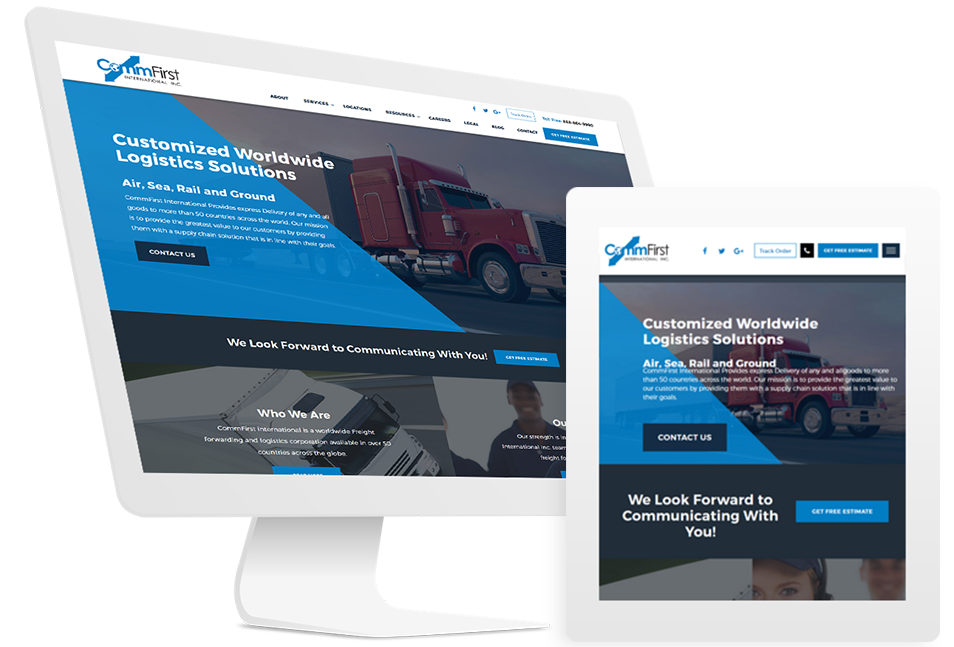Key Approaches for Applying User-Centric Internet Site Style to Increase Engagement
When considering the application of user-centric web site design, certain techniques are important in enhancing involvement. Thorough study right into customer requirements and preferences creates the structure, assisting the development of user identities to notify layout options. Customizing content boosts individual fulfillment, and robust accessibility functions expand reach.
Understanding User Demands
Understanding user demands is an essential action in the procedure of user-centric web site design. This technique makes certain that the internet site lines up with the assumptions and requirements of its target audience, ultimately leading to boosted individual complete satisfaction and engagement. The initial stage entails carrying out extensive study to collect understandings into customer habits, choices, and pain factors. Methods such as studies, interviews, and user screening can give useful qualitative and measurable information concerning just how individuals interact with the internet site.
Examining this information permits designers to produce comprehensive user personalities that represent the various segments of the target market. These personalities assist notify style decisions by highlighting specific customer objectives and obstacles, leading the development of functions that address these needs efficiently. Comprehending the context in which individuals run-- such as their atmosphere, tool choices, and time restrictions-- can even more fine-tune the design approach.
Compassion plays a vital function in this process, making it possible for developers to see the internet site from the individual's point of view. By prioritizing individual requirements, the design procedure ends up being a lot more focused, preventing the incorporation of unneeded aspects that could mess the customer experience. Eventually, a deep understanding of user demands is crucial in crafting a website that is both useful and significant.
Creating User-friendly Navigation
Having actually developed an extensive understanding of customer demands, the following action in user-centric site design entails developing user-friendly navigating. Efficient navigating is essential to user contentment, affecting exactly how conveniently customers can locate information and full tasks. To accomplish instinctive navigation, developers should prioritize simpleness and clarity, ensuring that the navigating framework is sensible and consistent throughout the website.
Organizing material right into a clear hierarchy is crucial. Website Design. The use of familiar tags and symbols can direct customers effortlessly, minimizing cognitive load and improving the overall user experience. A well-designed navigating bar need to be prominently placed, allowing customers to identify their current location and quickly check out various other areas of the web site
It is also vital to incorporate interactive elements such as breadcrumbs and search performances to help individuals in browsing complicated websites. These attributes supply added paths and boost the ease of access of content, satisfying numerous customer choices and behaviors.
Evaluating navigation with genuine individuals is important to identify possible discomfort points and make certain functionality aligns with customer assumptions. Regular comments loops and repetitive renovations can assist maintain a reliable navigating system that adapts to evolving customer requirements, ultimately boosting involvement and satisfaction.
Creating Receptive Interfaces
Invariably, producing receptive interfaces is an essential element of modern-day web design, making sure that internet sites are practical and available across a wide range of tools and display sizes (Website Design). This adaptability is vital in a landscape where users accessibility material using mobile phones, tablets, laptop computers, and desktop computers, each with differing alignments and resolutions. The primary objective of responsive style is to boost user experience by keeping optimal readability and functionality, no matter of the tool used
To accomplish this, internet developers use versatile grid formats, liquid images, and CSS media queries. Versatile grids permit website elements to resize proportionally, while fluid pictures guarantee visuals scale suitably without losing quality. Media inquiries play a vital function by applying different styles based on the tool's qualities, such as width, elevation, and alignment, thus tailoring the design to the customer's display.
Moreover, receptive interfaces add to boosted search engine optimization (SEO) by offering a seamless individual experience, which subsequently can lower bounce prices and boost website involvement. In recap, embracing receptive style is not simply a technical factor to consider but an essential approach for cultivating a user-centric internet setting that meets the demands of a varied target market.

Personalizing Web Content Experience
Customizing content experience is a crucial element of user-centric internet site layout that entails tailoring material to satisfy the distinct preferences and actions of specific customers. This technique not just enhances user fulfillment however additionally cultivates much deeper interaction, as visitors are most likely to interact with web content that reverberates with their needs and interests. By leveraging information analytics and individual responses, organizations can recognize patterns and patterns that notify the personalization of web material.
Including customization methods can range from simple modifications, such as suggesting products based on surfing history, to extra advanced techniques like vibrant web content that adapts in real-time to a customer's interactions. Individualized touchdown pages can considerably boost conversion rates by why not try here providing customers with appropriate details and provides that line up with their previous tasks and preferences.
In addition, utilizing synthetic knowledge and artificial intelligence can even more refine content customization by continuously discovering from user habits and adjusting to arising trends. This not only improves the customer's trip but likewise develops brand commitment, as consumers feel comprehended and valued. Eventually, personalizing the web content experience is a vital approach for businesses aiming to develop a more engaging and significant communication with their audience.
Enhancing Ease Of Access Functions
Enhancing availability functions is an essential facet of user-centric internet site style, making certain that digital web content is useful by everyone, consisting of people with handicaps. This strategy not only abides by lawful criteria such as the Americans with Disabilities Act (ADA) and the Internet Web Content Ease Of Access Guidelines (WCAG) yet likewise significantly expands a web site's audience reach. By integrating functions like keyboard navigating, display visitor compatibility, and different text for images, internet sites become extra comprehensive, supplying a smooth experience for users with aesthetic, acoustic, or motor impairments.
Integrating responsive layout aspects is critical, helping with access on numerous gadgets and screen sizes, therefore suiting individuals with various choices and requirements. Moreover, comparison proportions and text size changes can improve readability for individuals with aesthetic difficulties. Supplying clear and succinct web content structure, such as lists and headings, aids understanding and navigation, particularly for individuals with cognitive disabilities.
Routine access audits must be conducted to determine and rectify possible obstacles, ensuring continued conformity and usability. By focusing on accessibility, companies not only foster inclusivity however likewise improve total user engagement and satisfaction, eventually driving greater conversion rates and moved here reinforcing brand loyalty.

Verdict
Including user-centric design methods substantially enhances web site involvement by focusing on the requirements and choices of individuals. Thorough research promotes the production of individual characters, assisting targeted design choices. Instinctive navigating and responsive interfaces boost functionality and availability throughout tools. Customizing content based upon customer behavior enhances complete satisfaction, while durable availability attributes expand audience reach. Collectively, these methods create a purposeful on the internet experience, fostering deeper engagement and interaction with the website.
Thorough research into individual needs and preferences develops the foundation, guiding the production of individual personalities to educate design choices. Techniques such as studies, interviews, and user screening can supply important qualitative and quantitative data concerning exactly how users engage with the web site.
By prioritizing customer demands, the design process comes to be more focused, stopping the addition of unnecessary elements that can mess the Get More Info user experience. Effective navigating is basic to individual complete satisfaction, influencing just how quickly users can locate info and complete jobs. The use of acquainted labels and symbols can lead individuals effortlessly, reducing cognitive load and boosting the general user experience.